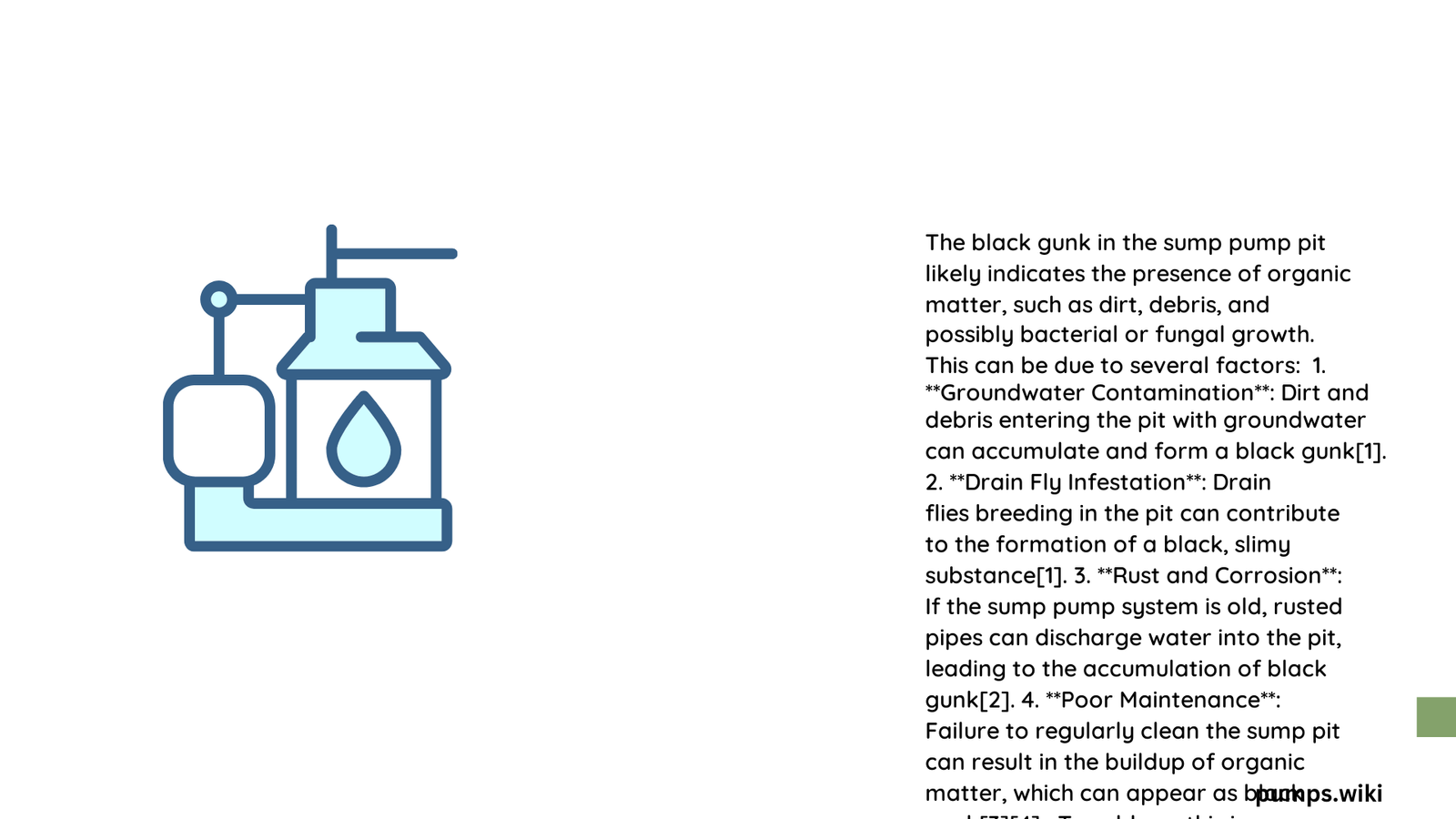Homeowners often encounter a mysterious black, sludgy substance accumulating in their sump pump pit, causing concern about potential water damage, bacterial growth, and system functionality. This troubling residue can result from various factors including organic matter decomposition, mineral deposits, inadequate drainage, and bacterial colonization, potentially compromising your sump pump’s efficiency and home’s moisture control system.
What Causes Black Gunk in Sump Pump Pit?
Black gunk in the bottom of a sump pump pit emerges from multiple interconnected sources:
Organic Matter Decomposition
- Dirt and debris accumulation
- Microbial breakdown processes
- Natural sediment settlement
Mineral and Chemical Interactions
| Mineral Source | Potential Impact |
|---|---|
| Well Water | High iron content |
| Groundwater | Mineral sediment |
| Soil Composition | Chemical reactions |
Bacterial Ecosystem Development
Moisture-rich environments like sump pump pits create ideal conditions for bacterial growth:
– Constant humidity
– Organic material presence
– Limited air circulation
– Consistent temperature
How to Identify Black Gunk Composition?

Visual Inspection Techniques
- Examine color and texture
- Check for unusual odors
- Assess sediment consistency
- Note surrounding moisture levels
Professional Diagnostic Methods
- Water quality testing
- Microscopic analysis
- Chemical composition screening
What Are Potential Risks of Black Gunk Accumulation?
System Performance Degradation
- Reduced pump efficiency
- Increased mechanical stress
- Higher energy consumption
- Potential premature system failure
Health and Environmental Concerns
- Potential mold development
- Bacterial proliferation
- Unpleasant odors
- Water contamination risks
How to Clean Sump Pump Pit Effectively?
Recommended Cleaning Procedure
- Disconnect power source
- Remove standing water
- Scrub pit walls
- Use vinegar-water solution
- Rinse thoroughly
- Disinfect with mild bleach solution
Essential Cleaning Tools
- Protective gloves
- Soft-bristled brush
- Bucket
- Vinegar
- Mild detergent
- Bleach
- Towels
When Should Professional Help Be Considered?
Warning Signs
- Persistent black gunk return
- Unusual pump noises
- Decreased water removal capacity
- Visible structural damage
Professional Service Benefits
- Comprehensive diagnostic assessment
- Advanced cleaning techniques
- Potential system optimization
- Long-term maintenance recommendations
Prevention Strategies
Regular Maintenance Checklist
- Quarterly pit inspection
- Annual professional evaluation
- Proper drainage management
- Install pit cover
- Monitor water quality
Conclusion
Understanding and addressing black gunk in your sump pump pit requires proactive maintenance, careful observation, and timely intervention. By implementing systematic cleaning and monitoring practices, homeowners can protect their basement infrastructure and ensure optimal water management.
Maintenance Frequency
- Light cleaning: Every 3-4 months
- Comprehensive inspection: Annually
Cost Considerations
- DIY Cleaning: $20-$50
- Professional Service: $150-$500
Reference:
– DIY Chatroom Sump Pit Discussion
– Water Quality Resources
– Home Maintenance Guidelines
